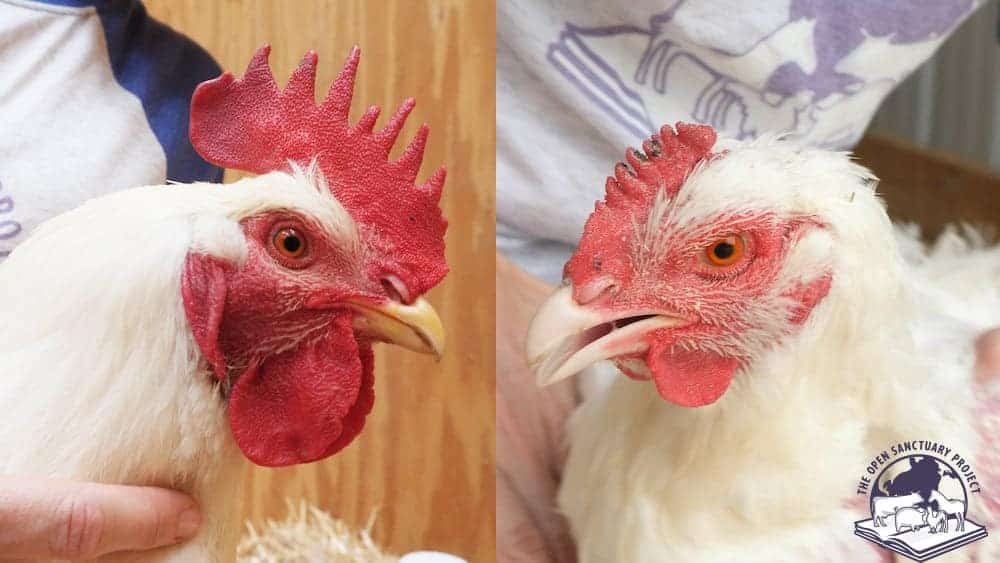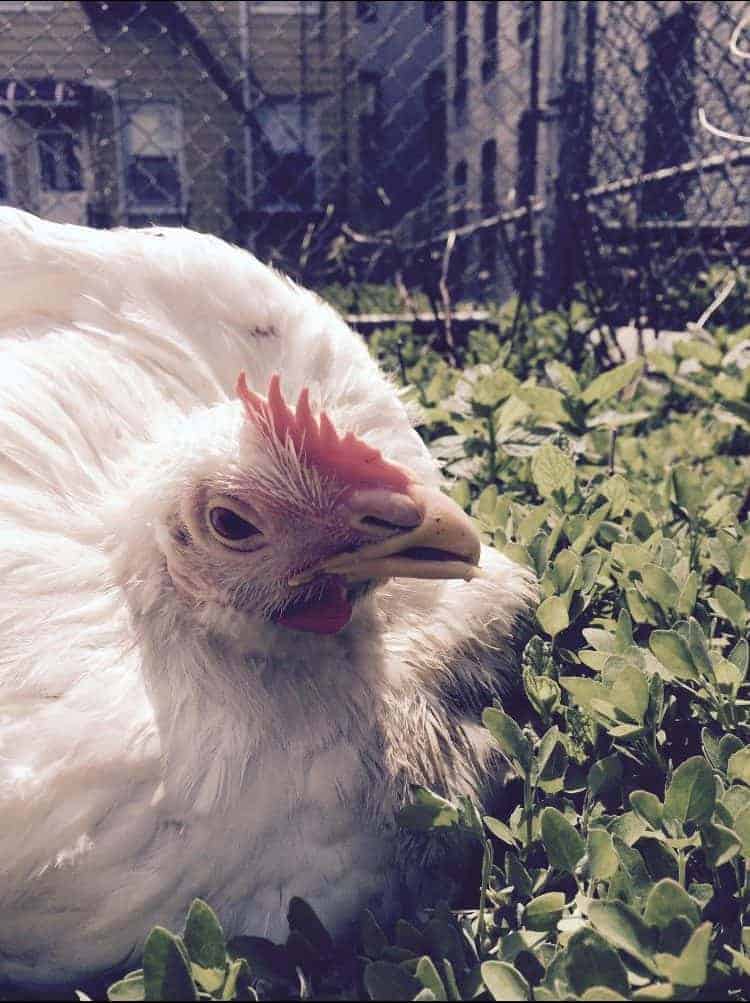
Check Out Our Basic Chicken Care Courses!
This resource consists of excerpts from Basic Chicken Care Part 1 and Basic Large BreedDomesticated animal breeds that have been selectively bred by humans to grow as large as possible, as quickly as possible, to the detriment of their health. Chicken Care Part 1, two of the free course offerings available at our Compassionate Care Classroom. While we hope you will check out our chicken care courses, we want to ensure this information is easily accessible to anyone looking for it by offering this stand-alone resource.
Because sex plays an important role in creating safe living arrangements for chickens, it’s important to learn how to identify males (roosters) and females (hens). This can be a bit tricky (or near impossible) depending on the age of your residents. Most breeds of chickens are pretty easy to sex once they are mature, but fuzzy little chicks are more difficult (unless you know a chick is a “sex-link,” which produces different colored male and female chicks). Though you may be assured that a very young chick has been “sexed,” take this with a grain of salt and be prepared in case the chick was sexed incorrectly.
Can You Help Us Replace Our Stock Photos?
You’ll see that we use a few stock photos in this resource. When it comes to photos of animals, we prefer to use photos of individuals at sanctuaries or living with compassionate caregivers. If you have photos that illustrate the same points as the stock photos used in this resource and are willing to share them (with appropriate credit, of course!), please get in touch with us!
Non-Large Breed Chickens
First, let’s look at the differences between mature non-large breedA domesticated animal breed that has not been specifically engineered to grow as quickly as possible for the purpose of human consumption. In resources at The Open Sanctuary Project, "Heritage" breeds of turkeys, for instance, are "non-large breed", even if they are physically quite big. males and females.
Comb And Wattle Size
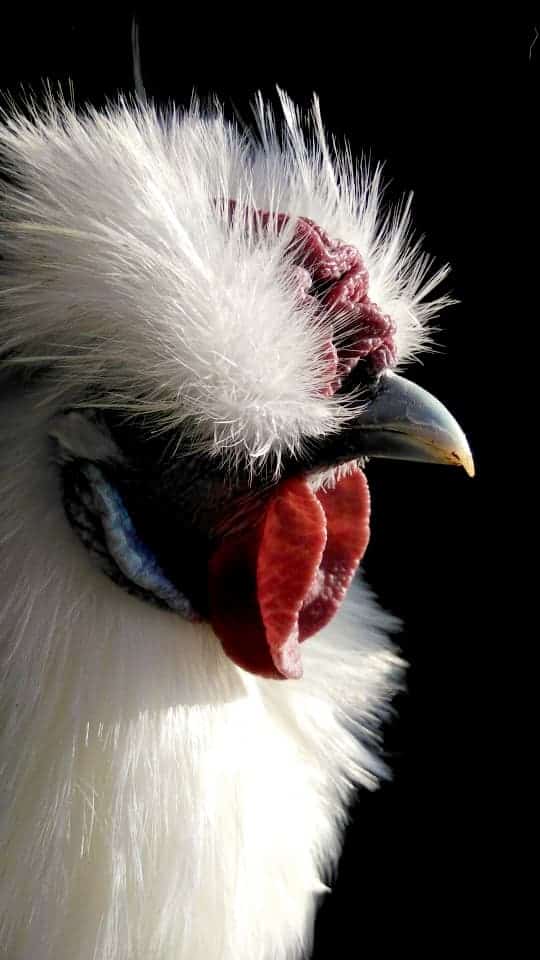
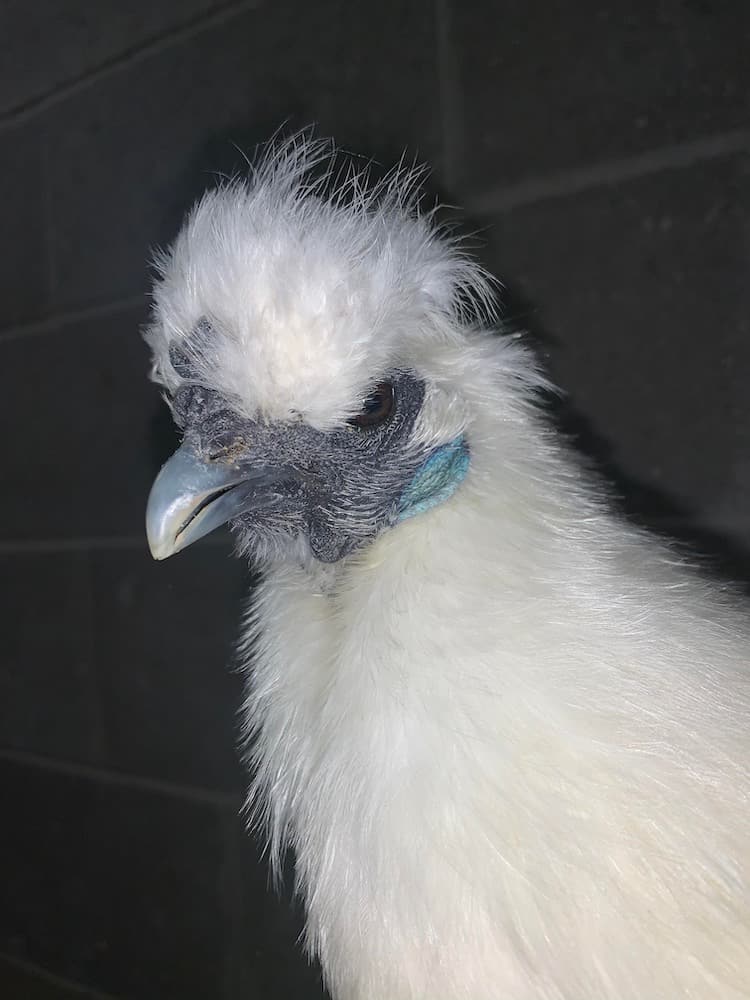
Different breeds of chickens have different sized combs and wattles, so it’s important to compare between the same breed. Leghorns, for example, have very large combs and wattles, but the roosters typically have significantly larger combs and wattles than the hens. Comparing comba fleshy crest on the head of the domestic chicken and other domesticated birds and wattlea fleshy pendulous process usually about the head or neck (as of a bird) size between different breeds won’t be helpful – a leghorn hen could have a larger comb than roosters of a different breed. However, if you can compare comb and wattle size between males and females of the same breed, you will see that males typically have larger, and often redder, combs and wattles than the females.
Hackle Feathers
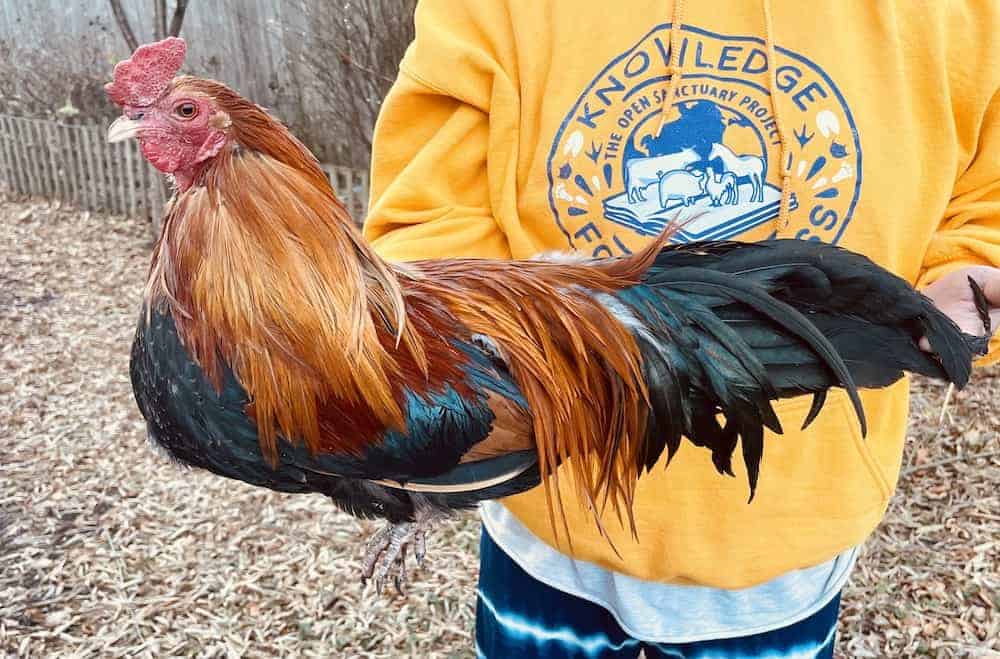
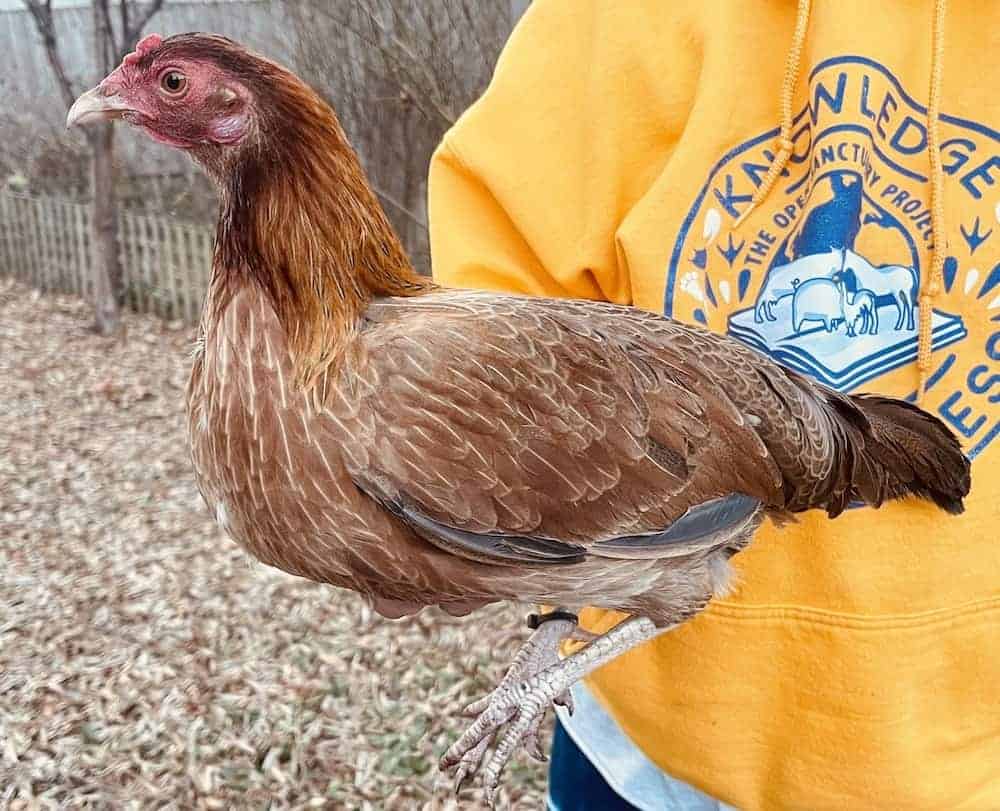
Hackle feathers are the feathers that grow on the neck. Mature males have hackle feathers that are longer and more pointy than the females who tend to have shorter, more rounded hackle feathers.
Saddle Feathers
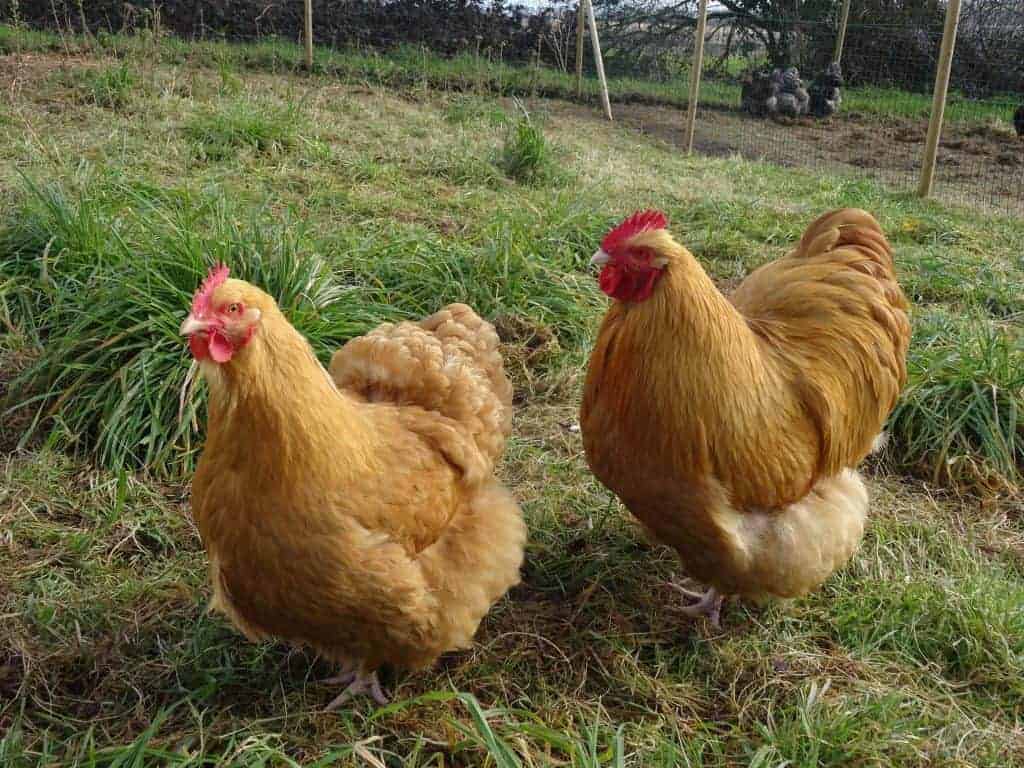
The presence of long saddle feathers with pointed tips is a clear sign a chicken is male. These feathers come from the base of the tail and drape downward.
Tail Feathers
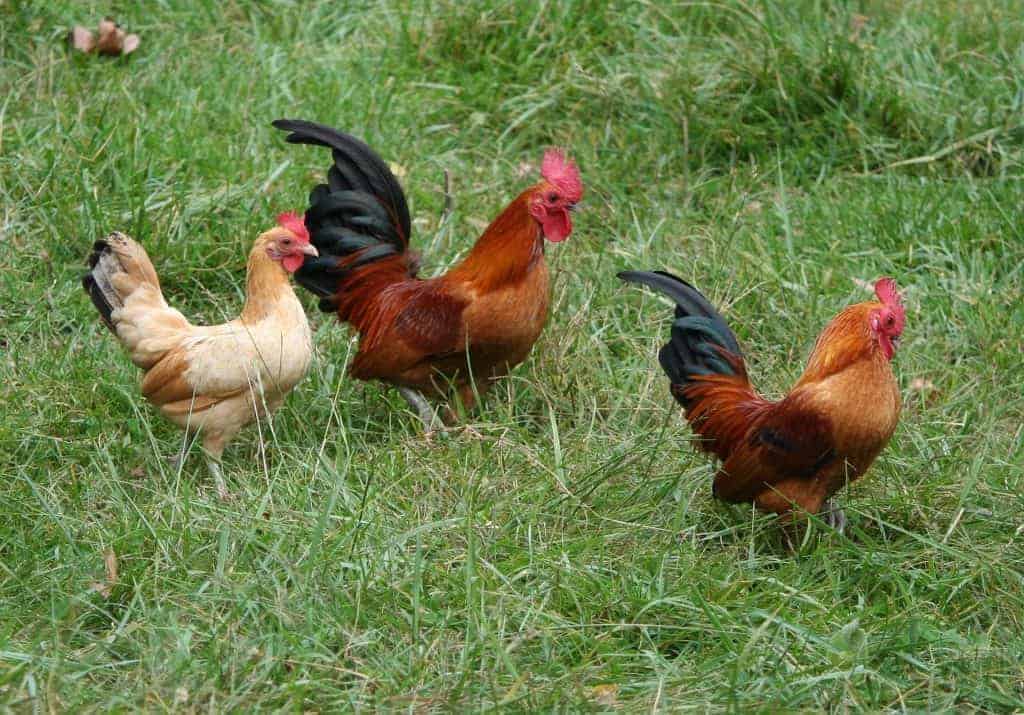
In most breeds of chickens, the males will have longer, sickle-shaped tail feathers, whereas females will have shorter tails that are straight. In most breeds, the males also have more vibrantly colored tail feathers. The absence of long, fancy tail feathers does not automatically mean a chicken is a female. Chickens lose their feathers during a molt and can also lose them due to trauma, so it’s possible for a rooster to be missing his sickle feathers temporarily.
Other Differences Between Roosters And Hens
In addition to the differences listed above, other things to look for are the size of the feet and thickness of the legs, as males tend to have larger legs and feet than females. Males also have larger spurs (horn-like growths on their legs). Some females grow spurs as well, but they tend to be much smaller than those of males. Males can break off their spurs, so the presence or lack of spurs alone is not a clear indicator of sex. Depending on the breed, the males’ feathers are also more vibrantly colored, but in all-white birds, this distinction alone isn’t very much help. Males are also generally larger than females of the same breed.
Paying attention to a chicken’s general demeanor as well as their interactions with other chickens can also be quite insightful, but illness, fear, and social dynamics could impact how a chicken presents themselves. Be aware that while crowing is most often heard from roosters, not all roosters will crow, and on occasion you will meet a hen who does. Males tend to stand more upright than females, may be more assertive, and might even do a little dance to show off for you or a flockmate. Females may present submissive behavior such as squatting when approached and may demonstrate broodyTerm used to describe a hen demonstrating behavioral tendencies associated with sitting on, incubating, and protecting a clutch of eggs, but a hen can be broody even if her eggs are removed. behavior.
Sexing Non-Large Breed Chickens Before They Have Matured
When attempting to identify the sex of a younger chicken who hasn’t yet matured, we suggest keeping an eye out for the characteristics and tendencies above. Unfortunately, with very young chicks, it really can be a guessing game, so the most important thing is to be prepared to properly care for the chicken regardless of whether they are a male or a female.
Large Breed Chickens
Large breed chickens are usually very easy to sex once they are mature, but again, fuzzy little chicks are more difficult. Luckily, males and females can safely live together when they are babies – once you start seeing physical or behavioral differences between males and females, it’s time to separate them in order to protect the females from potential leg injuries or back wounds from mounting by heavy males. Cornish crosses are all white, and thus can be particularly difficult to differentiate when they are young. Vanessa Dawson, co-founder of Penelope’s Place, was kind enough to share some photos of young Cornish crosses she has rescued and cared for and has also shared her own experiences with trying to distinguish between males and females.
Large Breed Chickens Have Unique Care Needs!
Please be aware that Cornish crosses and other large breed chickens have different care needs than other breeds of chickens. To read more about the care of large breed chickens, check out our resource here or head over to the Compassionate Care Classroom!
Comb Size And Color
Jeffrey and Lily at 10 weeks old. It was clear early on that Jeffrey (left) was a rooster and Lily (right) was a hen. Photo courtesy of Vanessa Dawson And here they are at 6 months old. Jeffrey (left) has an even bigger comb. Photo: Vanessa Dawson These two Cornish crosses are the same age, but you can see how much larger and redder the rooster’s (left) comb and wattles are. You can also see the bigger earlobe in the rooster.
In the pictures above, it is pretty easy to tell who is the rooster and who is the hen. However, not all roosters and hens develop in this way. It is possible for a young rooster to have a smaller, paler comb, and it is possible for a hen to develop a moderately sized comb. Comb size and color can be affected by many factors, including overall health, so you can’t rely on the fact that a big or small comb automatically indicates male or female.
Foot Size And Leg Thickness

In general, a better indicator of sex in large breed chicks is foot size and leg thickness. If you are able to compare males and females of the same age, you will likely see that the males have taller, thicker legs and much larger feet than females. As they mature, the males will also develop spurs, but be aware that females sometimes grow spurs, too!
Hackle Feathers
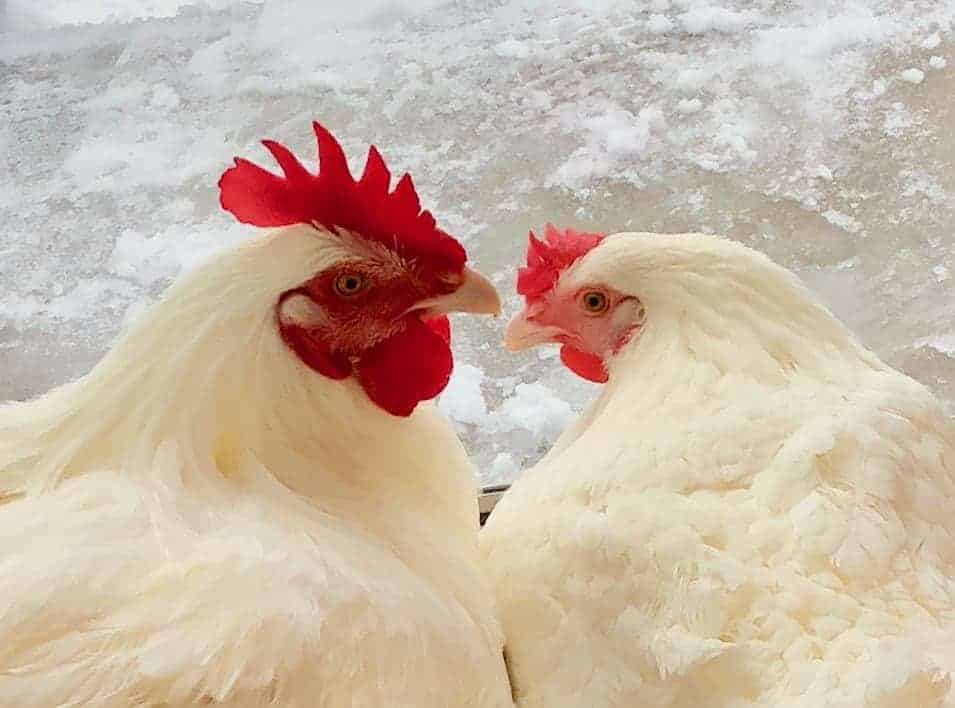
Hackle feathers are the feathers that grow on the neck. Mature males have hackle feathers that are longer and pointier than the females who tend to have shorter, more rounded hackle feathers.
Saddle Feathers And Tail Feathers

Mature roosters will have longer, curved tail feathers (but, remember, these can fall out due to a molt or trauma). They will also have saddle feathers, which are the feathers that come from the base of the tail and drape downwards.
Sexing Large Breed Chickens Before They Have Matured
When attempting to identify the sex of a younger large breed chicken who hasn’t yet matured, we suggest focusing on leg and foot size, as this seems to be the best indicator of sex. Unfortunately, with very young chicks (and, as noted above, sometimes even chickens who are many months old), it really can be a guessing game, so the most important thing is to be prepared to properly care for the chicken regardless of whether they are a male or a female.






